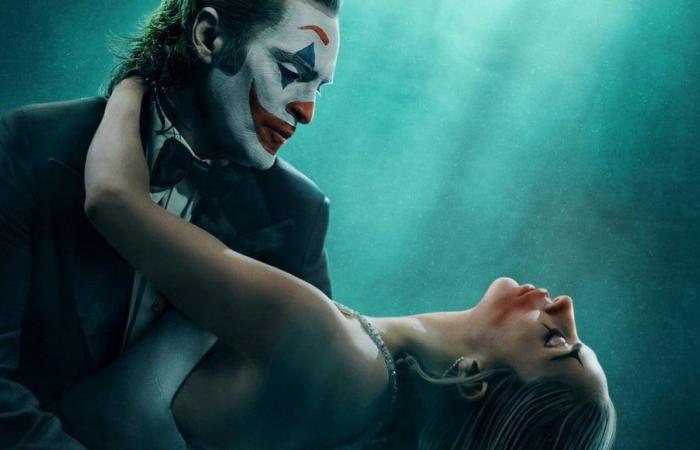Folie à deux: strange title when we know the character and the previous film, a title which summons the classic light Hollywood comedy in the very dark universe of DC Comics: this is undoubtedly there, the success of this often too long film, it is a shame, but with an irregular, bizarre beauty, always on the verge of failure, which is largely due to the seriousness with which he handles the musical – because yes, there is singing and dancing, in this Joker.
The Joker is therefore this psychopath with a clown face, undoubtedly the worst villain – “villain” in superhero films – from Gotham City. In the previous episode, he lived with his mother in a shabby two-room apartment, tried in vain to become a comedian, frightened rather than made a terrified audience laugh with his impromptu sneers, and ended up killing with fury, including a presenter live on television. We find him at the start of this second episode in a prison awaiting trial. Even thinner and stooped than before, he takes his medication and no longer even makes jokes despite the constant provocations of the supervisors; in short, he remains calm, encouraged by a prestigious lawyer who wants to bet on dementia to avoid the death penalty. He became Arthur Fleck again, until one day, while attending a prison choir rehearsal, he fell in love with a young woman who claimed to be his biggest admirer, Harley Quinzel. And here is the character once again prey to schizophrenia, which this time takes a new form and literally determines what we see on the screen: both a trial film and a musical.
Middays of Culture Listen later
Lecture listen 27 min
We find Joaquin Phoenix in the title role and Todd Phillips directing, as well as Lady Gaga as Harley Quinzel, this lover who is more of a joker than the joker, who pushes the character into this musical madness. I really hated the first episode, which I found sluggish and ugly – it was all yellow, with low-grade psychology, and a kind of completely idiotic political fable – the Joker as insurrectional leader – plus it was was at the time of the yellow vests, we wanted to make it a class reading, everyone was saying anything.
In short, my surprise was great when I discovered this sequel, in which Todd Phillips rids his character of this artificial political mythology, the fate – almost, it’s not quite there yet – of his psychopathological determinism, to make the film a great love story with assumed romanticism, and whose marginality takes a paradoxically ultra-classic cinematic form: the musical. Joaquin Phoenix and Lady Gaga thus share typical scenes of 1940s Hollywood, dancing to jazz in front of a large cardboard moon, or television music hall with yéyé costumes and tap dancing. However, the film is not content to oppose reality to fantasy, reason to madness, the trial film to musicalno, that’s what is beautiful, is very successful: there are no fixed equivalences between these oppositions.
Proof of this is: the music circulates, it is both in and outside of reality: in the Joker’s head, and outside of it. It begins, whispered into a telephone or chanted in a prison refectory, before being accompanied by an orchestra which is outside the story, then transposed onto an imaginary scene, the fantastical one shared by Arthur and Harley. It is at this place, always very delicate in the musical, this moment where the music emerges, and which is often for the spectator a moment of sudden distance, of revealed artifice, in short of embarrassment, that the film finds its grotesque matinee grace, the impure and pathological grace of a sickly tap dance number. The Joker suffered from a first film completely enclosing him in a stiff auteurist device; this second, hybrid, always on the verge of catastrophe, frees him.






